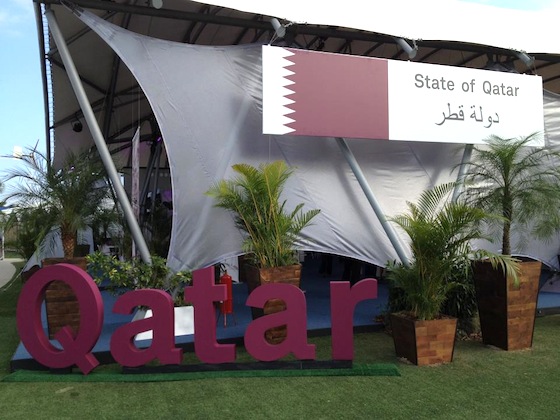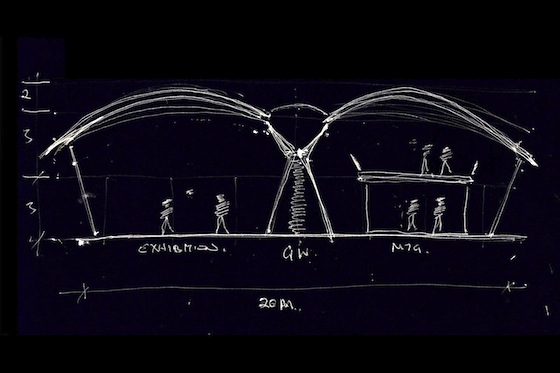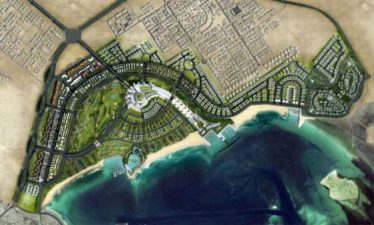 Everyone who constructed pavilions for the recently-completed Rio +20 conference in Brazil was required to source their materials locally and to employ members of the Rio de Janiero community to build each structure. But the New York-based industrial design firm Grimshaw Architects distinguished Qatar’s pavilion from the crowd by modeling its shape after the wingspan of a soaring falcon. Referencing Qatar’s longstanding devotion to falconry, the pavilion was comprised of a steel frame and a light transparent roof and showcased the emirate’s various sustainability initiatives.
Everyone who constructed pavilions for the recently-completed Rio +20 conference in Brazil was required to source their materials locally and to employ members of the Rio de Janiero community to build each structure. But the New York-based industrial design firm Grimshaw Architects distinguished Qatar’s pavilion from the crowd by modeling its shape after the wingspan of a soaring falcon. Referencing Qatar’s longstanding devotion to falconry, the pavilion was comprised of a steel frame and a light transparent roof and showcased the emirate’s various sustainability initiatives.
All of the materials used to erect the temporary pavilion – the steel, the stretched roof and all of the interior furnishings – were sourced within the country. Out of respect for the conference focus, each delegation was required to keep their embodied carbon footprint to a minimum. This is commendable, of course, but utterly without effect given the conference’s failure to produce any meaningful agreements.
Nonetheless, Grimshaw’s design, which was completed within a mere five weeks, included a translucent roof that allowed natural light to penetrate the entire structure, reducing the daytime electricity load and slits in the vertical walls that promoted natural ventilation.
The 500 square meter pavilion showcased a variety of sustainability projects the wealthy oil nation is pursuing in their bid to go from carbon to creativity.
Food insecurity and water scarcity are of particular concern to the Qatar National Food Security Program, which commissioned the pavilion’s construction. Executive Chairmain Fahad bin Mohammed Al-Attiya noted “In Qatar, we import from 90 to 95% of food and all our water is desalinated. Food and water security is a pressing issue, especially with the considerable raise of food prices in the last years.”
Qatar’s nine solar-powered stadiums that are in the pipeline for the 2022 world cup and the upcoming 2012 UN Climate Conference (COP18/CMP8) that will be held in Dohar in November were also topics of conversation at the 20th anniversary of the first conference on sustainable development in Rio de Janeiro.
The pavilion was disassembled and will be stored in Brazil for future use elsewhere.
:: Inhabitat
More on Qatar and Sustainability:
Can Qatar Balance its Oil Interests and Host a Climate Conference?
SLIDESHOW: Entries for Qatar’s 2022 World Cup Stadiums
Local Architect Questions the Logic of Qatar’s 2022 World Cup Groundwork





